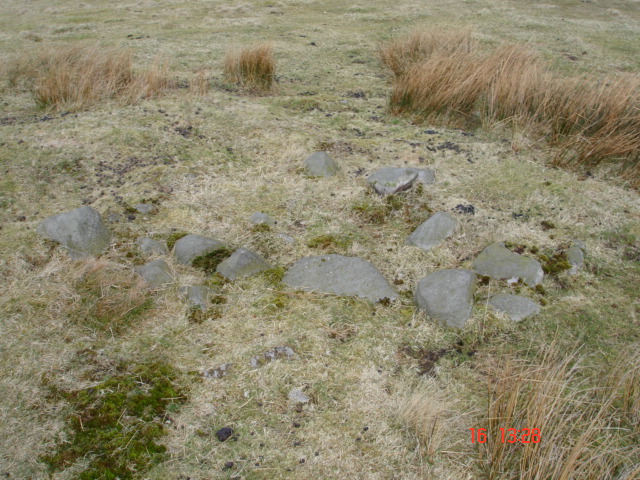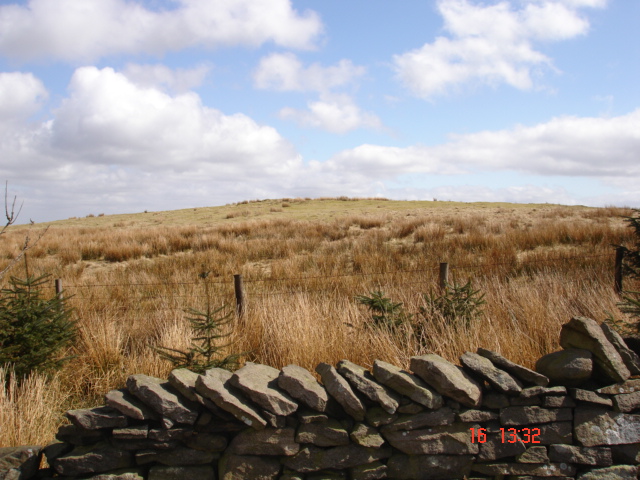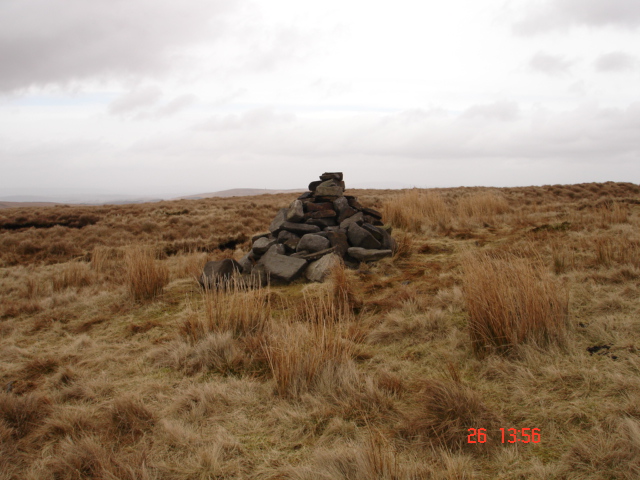
This detail shows the most prominent of the internal structures within the cairn. These upright stones form part of a low, right-angled arrangement that appears to demarcate a specific area in the interior of the cairn.

This detail shows the most prominent of the internal structures within the cairn. These upright stones form part of a low, right-angled arrangement that appears to demarcate a specific area in the interior of the cairn.

A detail of the stones forming the outer edge of the structure. This circular line of the retaining kerb wall can be easily traced around the perimeter of the site.

The view to the North West, with Two Lads in the distance. This image gives a good impression of the distinctly symmetrical profile of the cairn.



In this picture, viewed to the North East, the typical burial mound structure is quite distinct.

White Brow cairn, viewed directly North, with the familiar view of Winter Hill in the background.

Winter Hill Cairn. The view is to the NW, looking towards Anglezarke Moor.

The view from the northern slope of Winter Hill, taken from just above Belmont road and looking up towards the location of the burial site.

A 3m curved section of the outer kerbstone wall which encircled the burial barrow. This section is located approximately 10m SE of the cairn summit.

The Winter Hill Cairn site, located approximately 200m from the most northerly TV antenna.


Winter Hill Cairn. Initially excavated in 1958, this Bronze Age Barrow has been dated to c. 1500 BC. The structure is described as being 2.5m in diameter and being encircled by a kerbstone ring approximately 19m in diameter. Though little remains now, fragments of the central barrow, as well as small sections of curved lines of stones can still be traced amongst the tufts of grass.

As with the Winter Hill cairn site, Noon Hill was first excavated in 1958. It was found to consist of two concentric stone circles measuring 10m and 16m in diameter. These features formed the two outer structural walls which were covered with turf, to create the burial barrow. Inside the barrow mound fragments of burnt human bones were found, along with two flint arrowheads and a flint sacrficial knife. The site was subsequently dated to the late Bronze Age, around 1100BC.

Winter Hill bronze age barrow, looking South West across Rivington Moor.